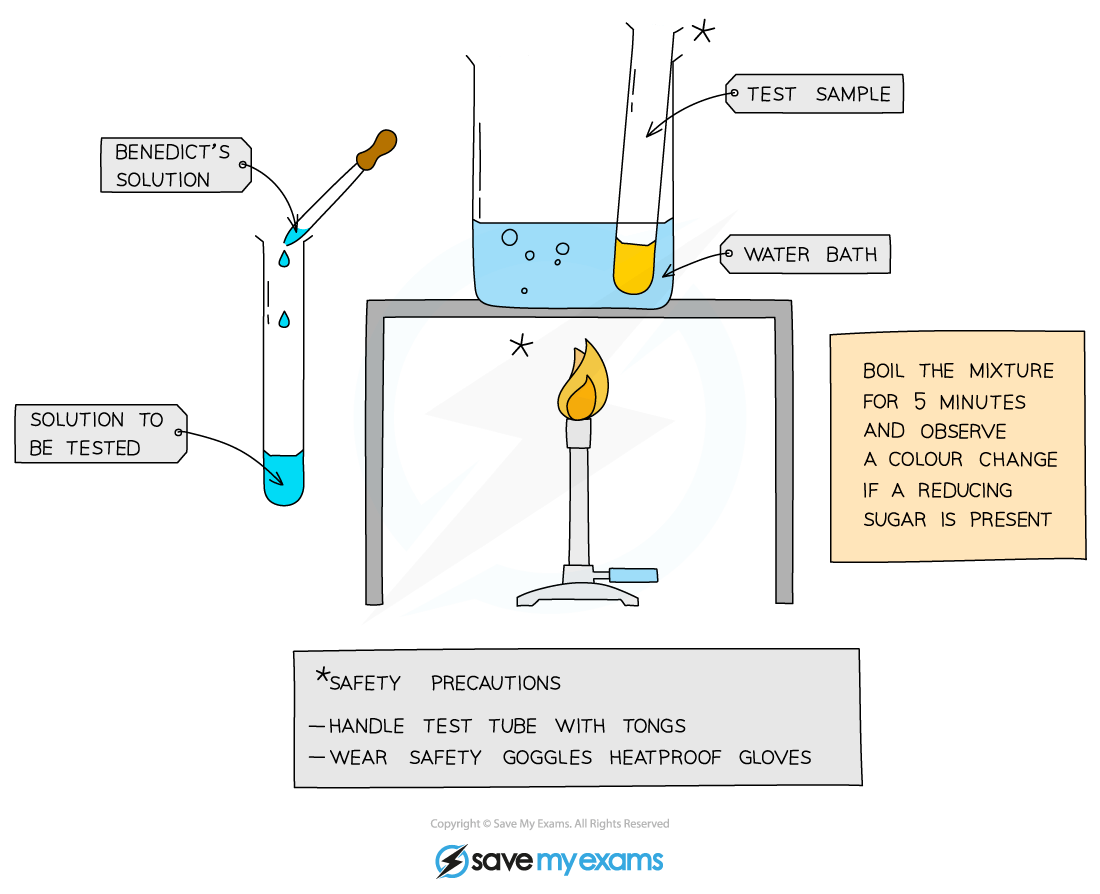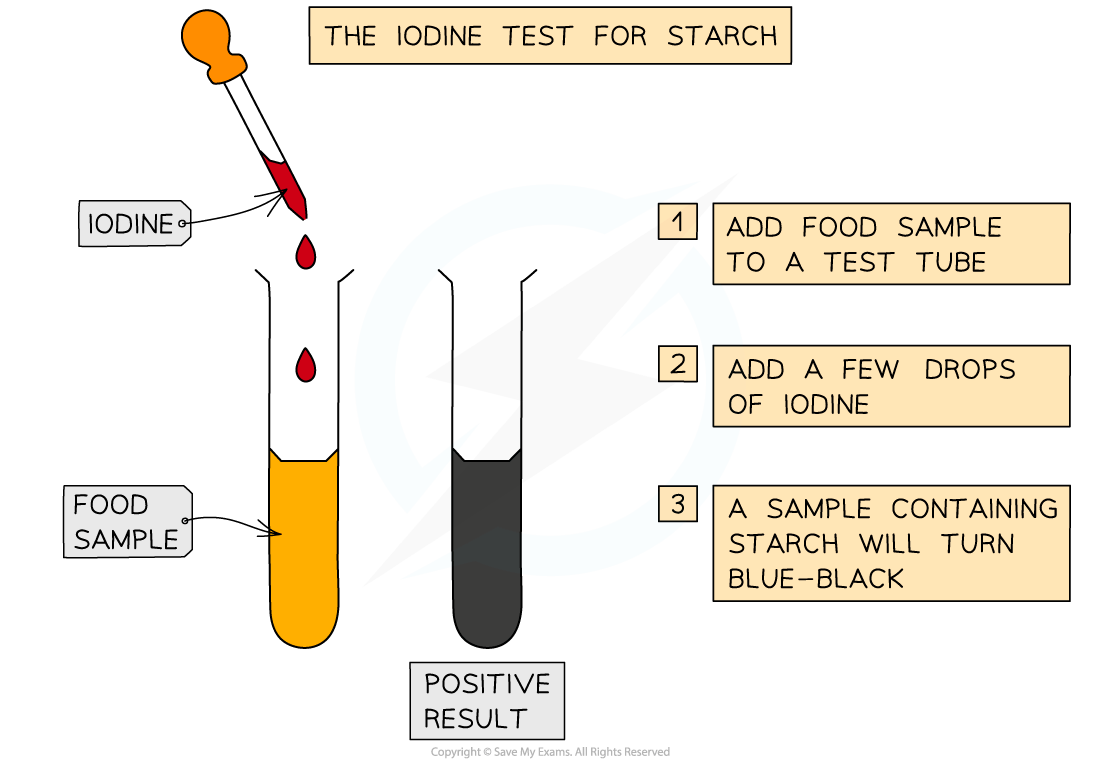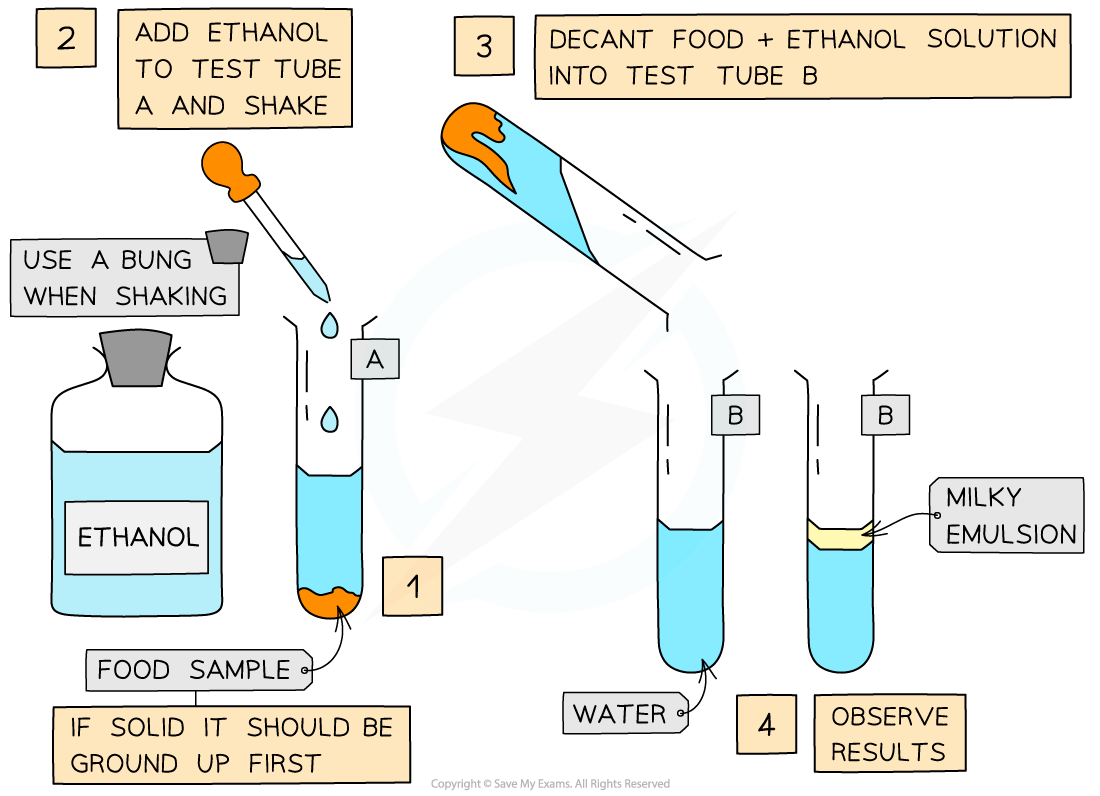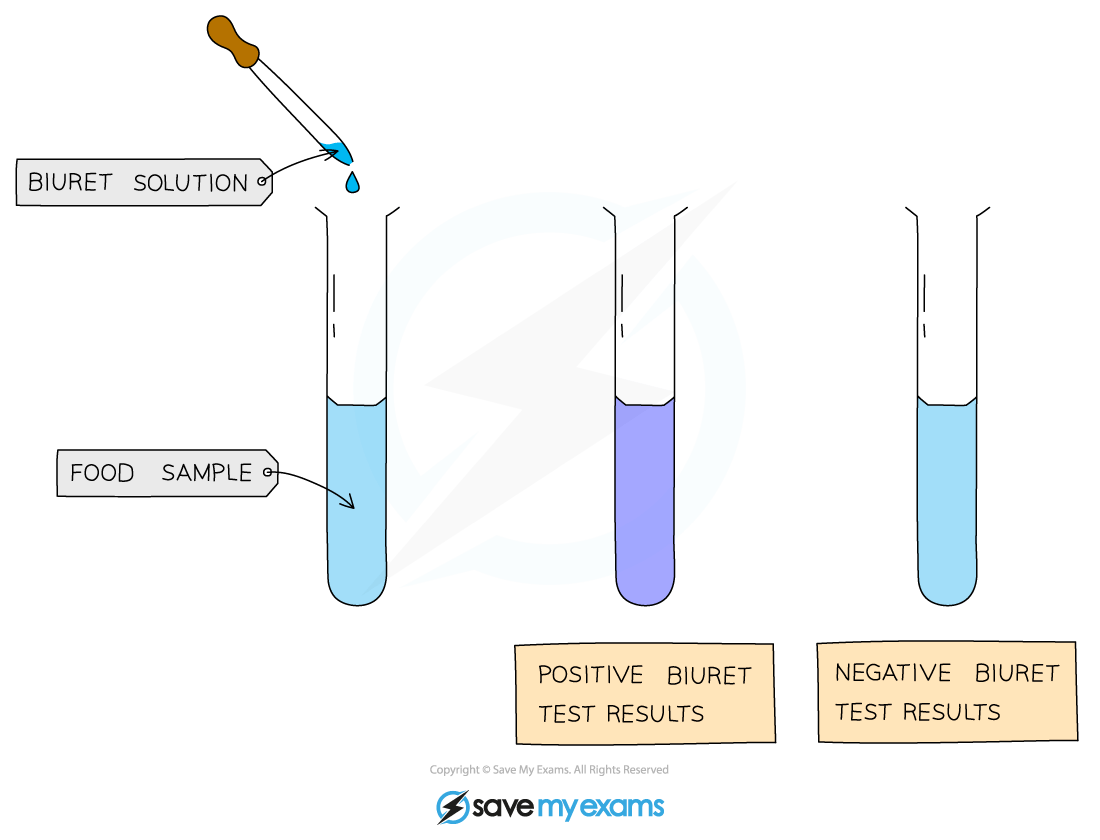Biological Molecule Tests (Cambridge (CIE) AS Biology): Revision Note
Exam code: 9700
Testing for key biological molecules
There are a number of tests that can be carried out quickly and easily in a lab to determine if a sample contains one of the key biological molecules (carbohydrates, proteins and lipids)
The following tests are qualitative
They do not give a quantitative value as to how much of each type of molecule may be present in a sample
The Benedict’s test for reducing sugars
Add Benedict's reagent (which is blue as it contains copper (II) sulfate ions) to a sample solution in a test tube
Heat the test tube in a water bath or beaker of water that has been brought to a boil for a few minutes
If a reducing sugar is present, a coloured precipitate will form as copper (II) sulfate is reduced to copper (I) oxide which is insoluble in water
A positive test result is, therefore, a colour change somewhere along a colour scale from blue (no reducing sugar) to brown/brick-red (a high concentration of reducing sugar)
This test is semi-quantitative as the degree of the colour change can give an indication of how much (the concentration of) reducing sugar present

The iodine test for starch
To test for the presence of starch in a sample, add a few drops of orange/brown iodine in potassium iodide solution to the sample
The iodine is in potassium iodide solution as iodine is insoluble in water
If starch is present, iodide ions in the solution interact with the centre of starch molecules, producing a complex with a distinctive blue-black colour
This test is useful in experiments for showing that starch in a sample has been digested by enzymes

The emulsion test for lipids
Lipids are nonpolar molecules that do not dissolve in water but will dissolve in organic solvents such as ethanol
Add ethanol to the sample to be tested, shake to mix and then add the mixture to a test tube of water
If lipids are present, a milky emulsion will form (the solution appears ‘cloudy’); the more lipid present, the more obvious the milky colour of the solution
If no lipid is present, the solution remains clear

The biuret test for proteins
A liquid solution of a sample is treated with sodium or potassium hydroxide to make the solution alkaline
A few drops of copper (II) sulfate solution (which is blue) is added to the sample
Biuret ‘reagent’ contains an alkali and copper (II) sulfate
If a colour change is observed from blue to lilac/purple, then protein is present.
The colour change can be very subtle, it’s wise to hold the test tubes up against a white tile when making observations)
If no colour change is observed, no protein is present
For this test to work, there must be at least two peptide bonds present in any protein molecules, so if the sample contains amino acids or dipeptides, the result will be negative

Examiner Tips and Tricks
A common mistake is just writing the colour change (e.g. “goes brick-red”) without naming the reagent. For full marks, always say what you add (e.g. Benedict’s reagent), what you do (e.g. heat in a water bath), and what result shows a positive test (e.g. a brick-red precipitate). This is how exam mark schemes are often structured.

Unlock more, it's free!
Did this page help you?